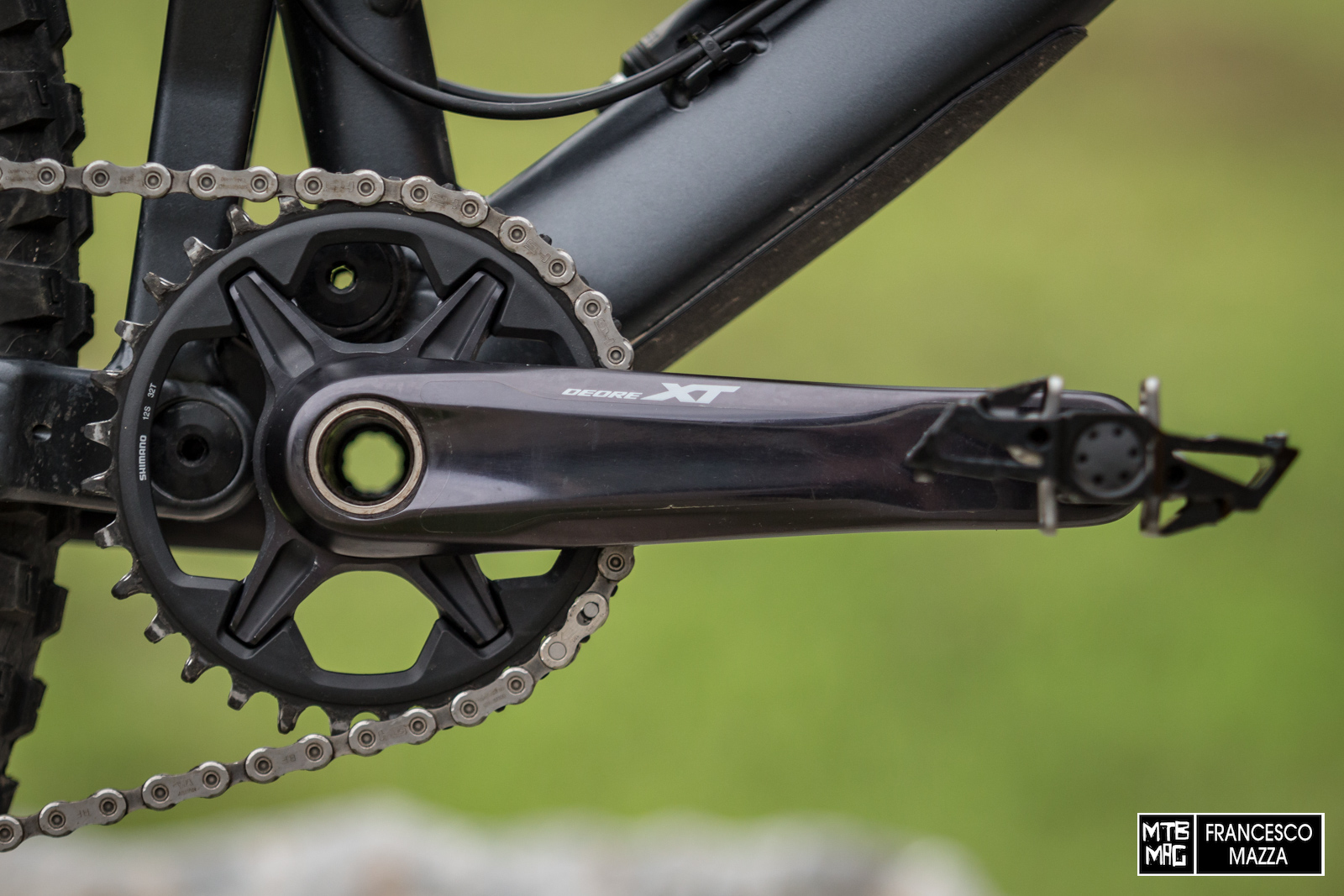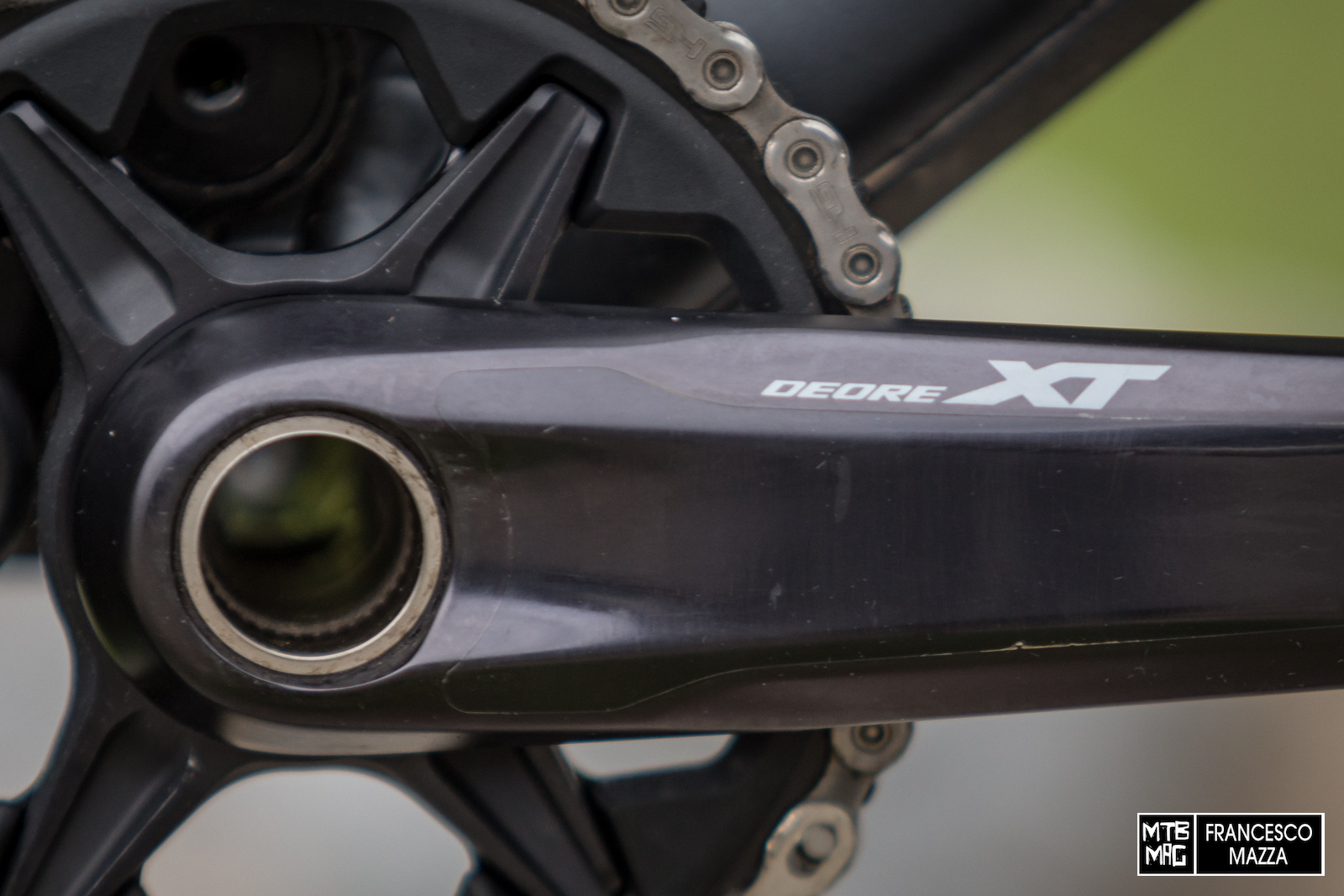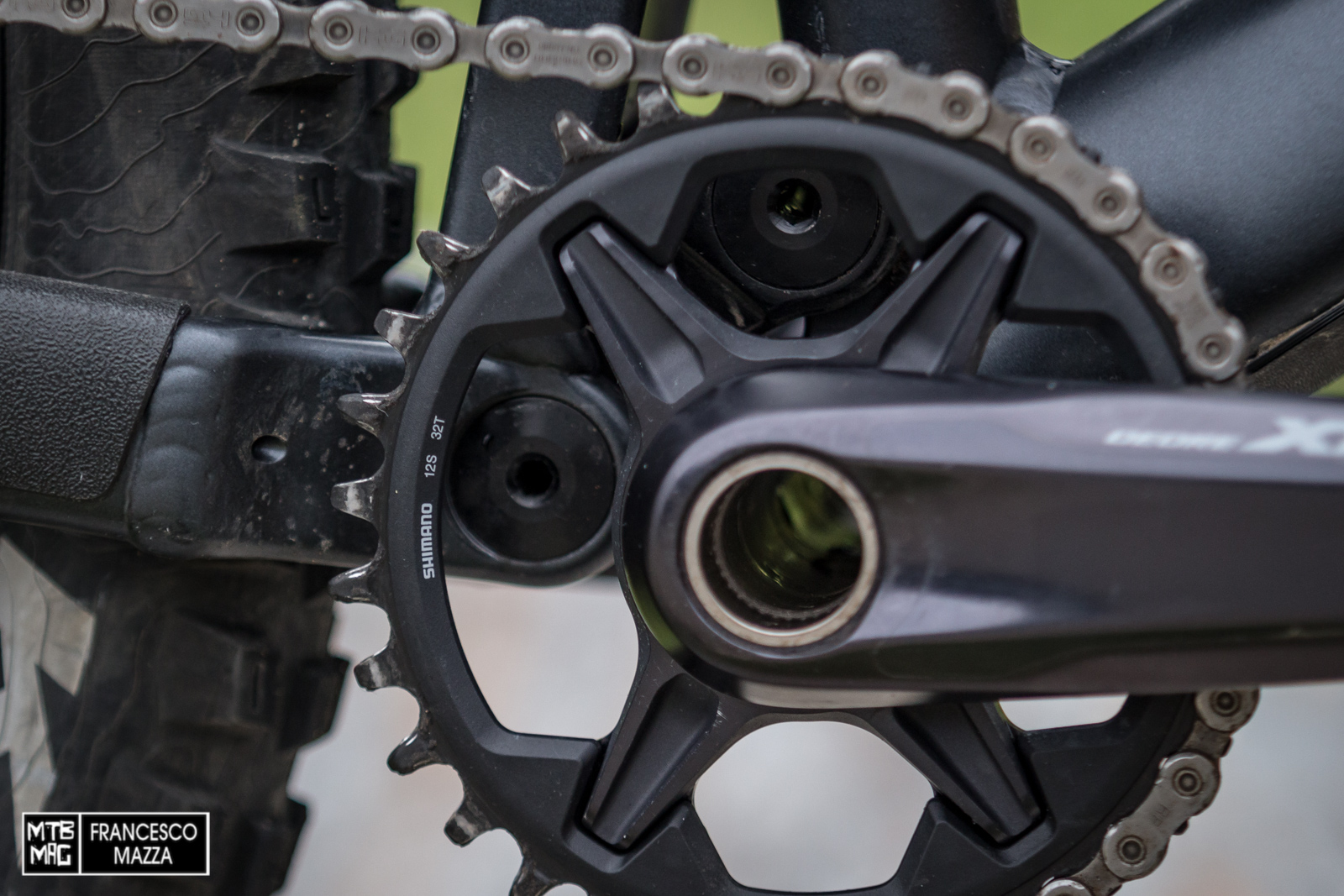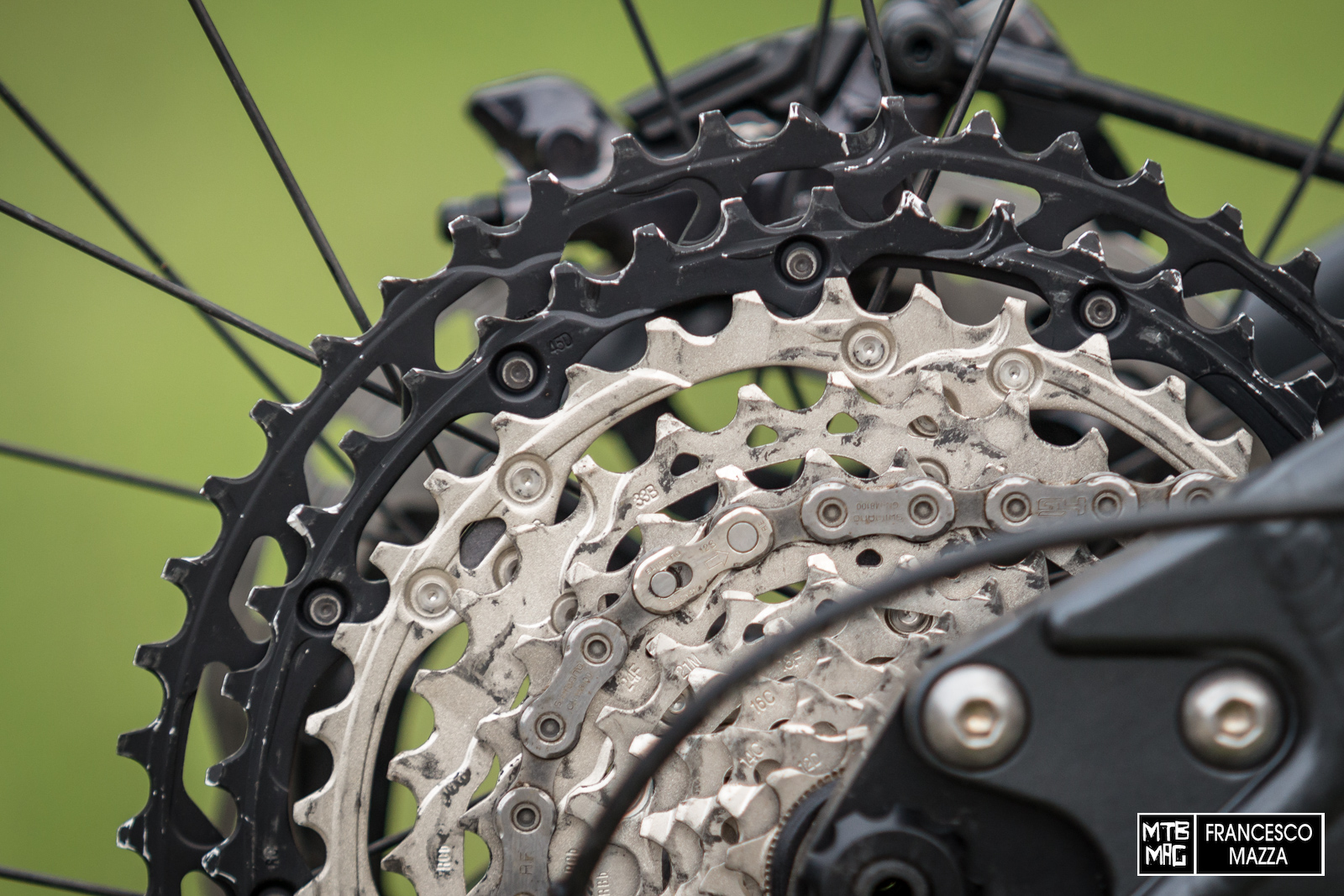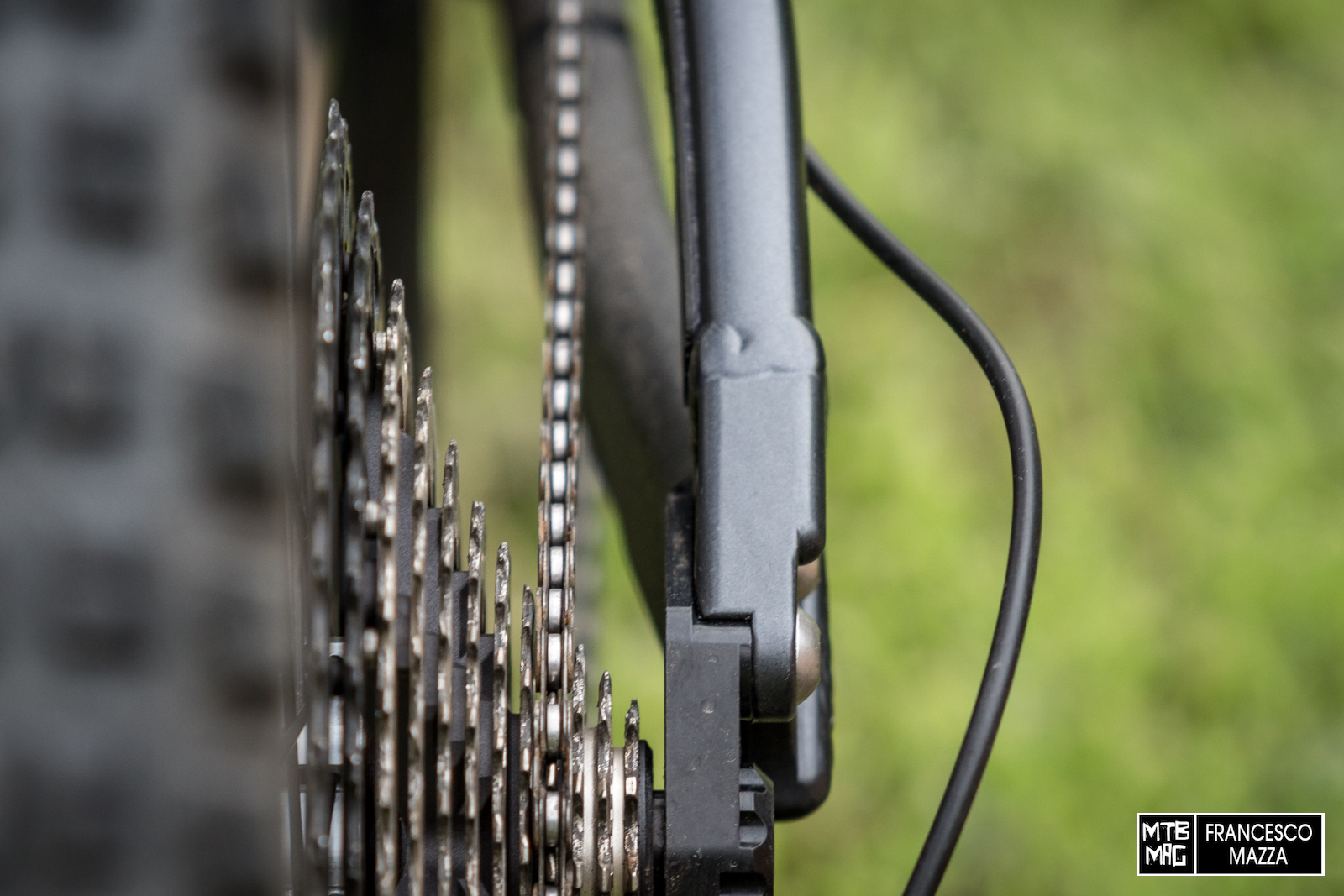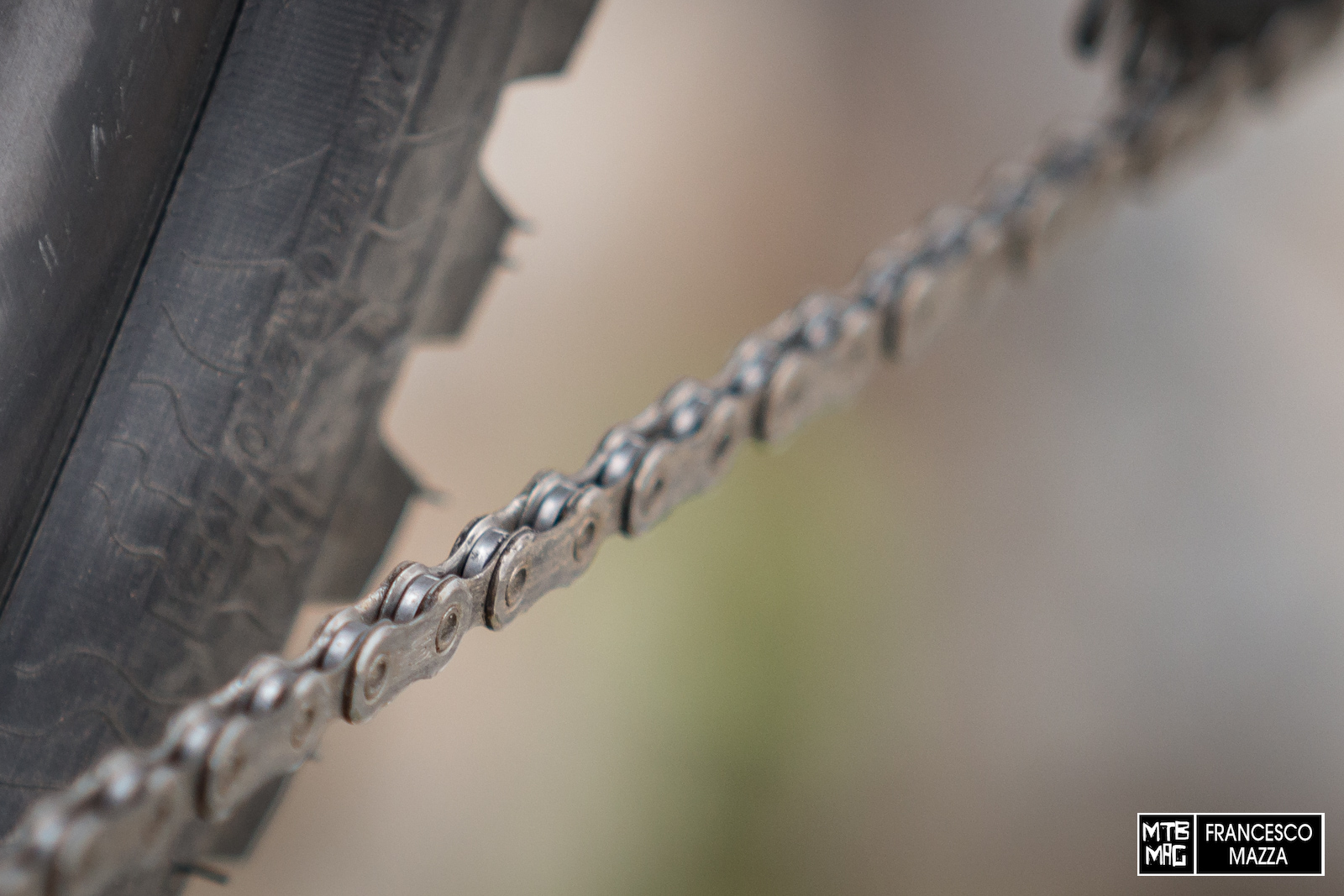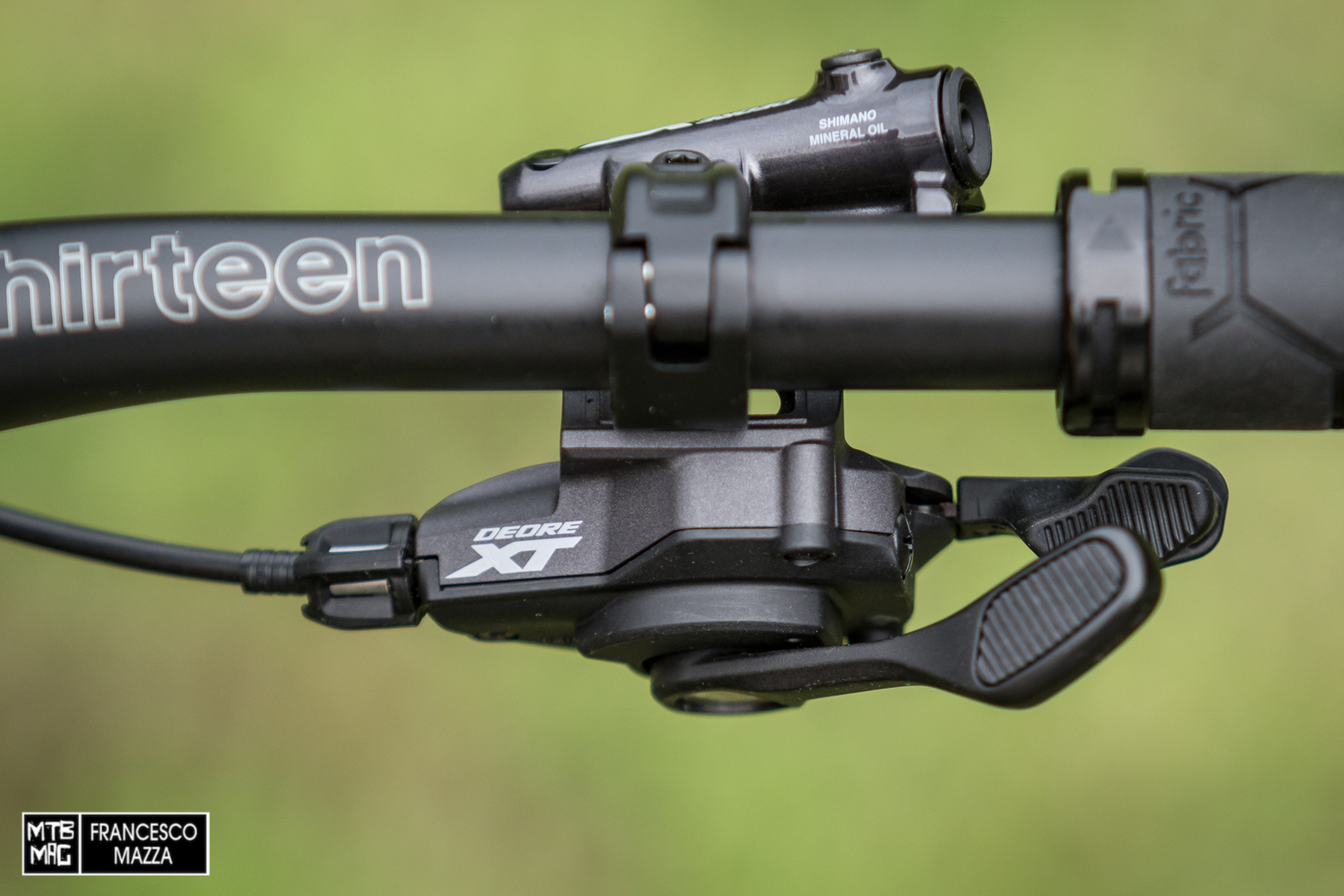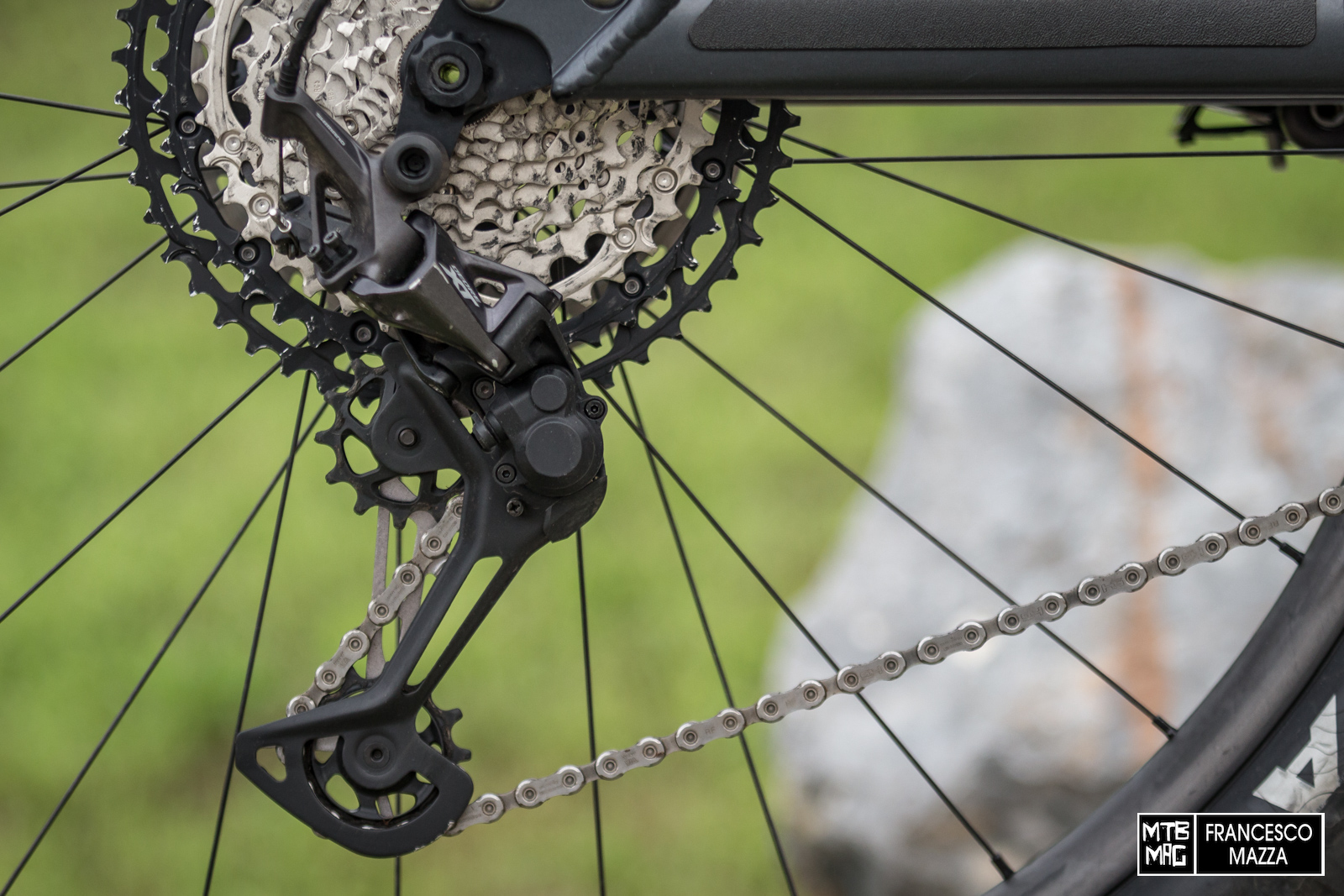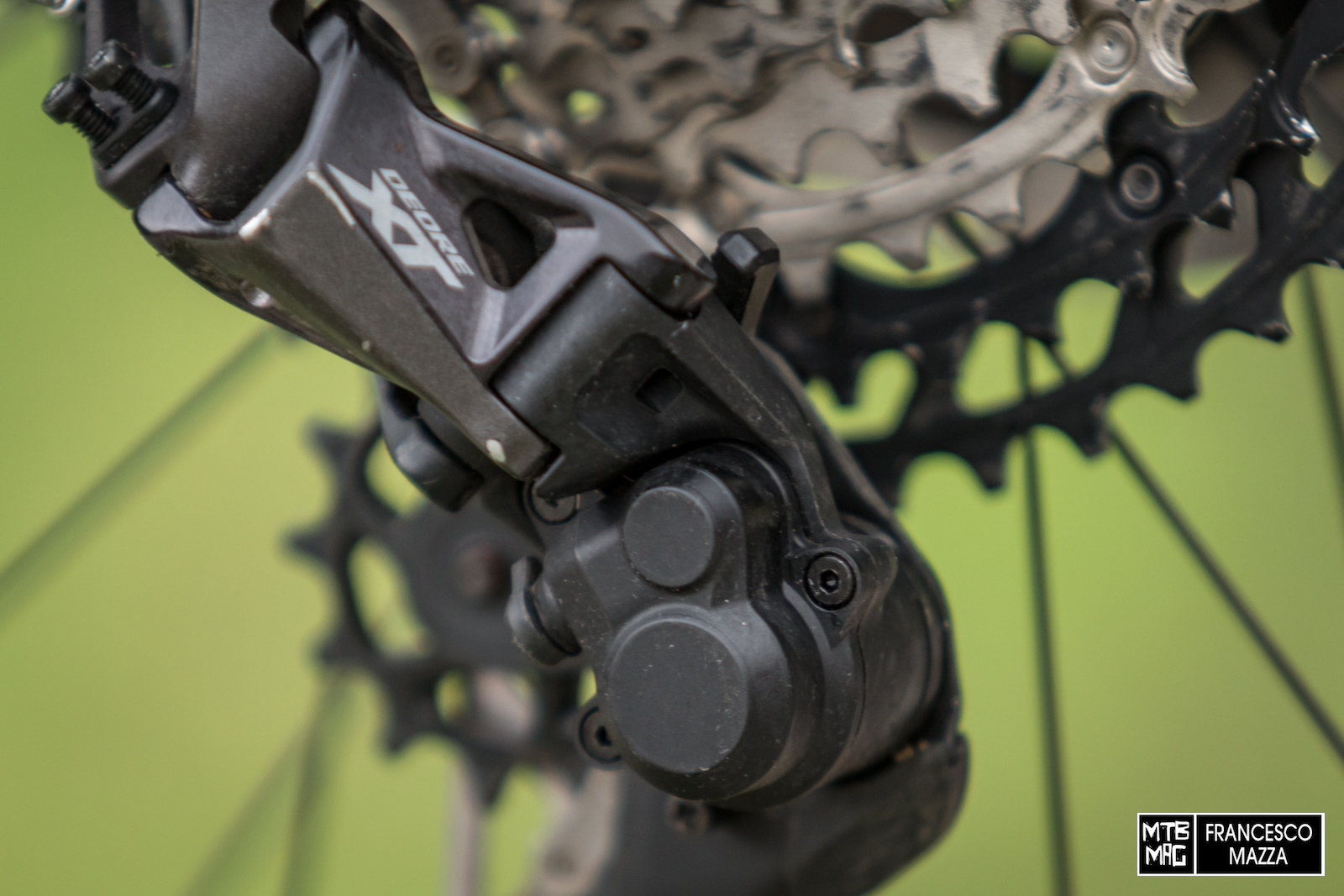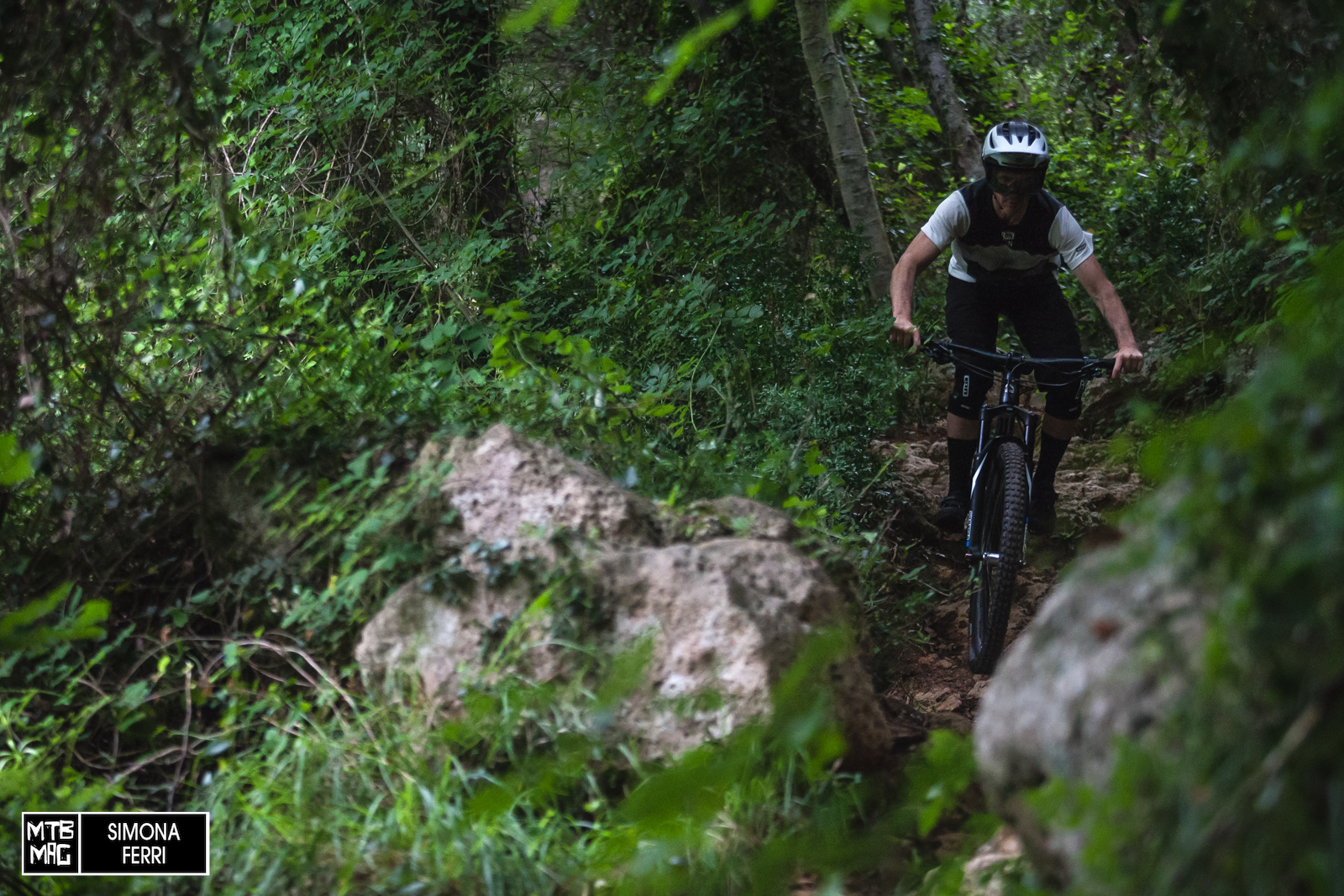[Tested] Shimano XT M8100 Drivetrain
Last May, on our Italian page, we presented you in every detail the Shimano XT M8100 groupset that was just waiting for the end of the lockdown to be mounted on the MDE Damper 29 2020 before finally being put to the test. Now, after about 500km of use in the dust of the Finale Ligure tracks, we are ready to speak on the performance of Shimano’s 12-speed mid/high end groupset. For all the technical details you can refer to the aforementioned article while below we will go deeper into our impressions and evaluations of each component and of the XT M8100 drivetrain as a whole.
Let’s start with the crankset, easy to assemble thanks to the traditional Shimano system with a splined axle and two pinch bolts that lock the non-drive side crankarm on the axle once the bearing tension has been set. This last operation is simple and very precise by tensioning the screw of the non-drive side of the axle, which pulls the crank arm to the stop. To rotate said screw however, a dedicated wrench is required in instead of an Allen key, which would make it possible to make adjustments even on-trail with a simple multitool, in case of unforeseen events. The quality of the BSA bottom bracket bearings turned out to be very good, better in my opinion than that of previous editions, and I never had to correct the adjustment of the bearings which still run smoothly and sturdily, without the slightest bit of play.
The cranks, which Shimano makes from forged aluminum alloy with a Hollowtech II hollow structure, are particularly stiff and strong – they feel like the stiffest XT cranks Shimano has ever produced. Representing one of the points of contact with the bike, the high degree of stiffness transmits part of the vibrations from the frame to the rider and, precisely for this aspect, I generally prefer the carbon cranks which, like the handlebar, dampen unwanted vibration more, thus improving the comfort. On the other hand, the robustness of the XT cranks is excellent and the surface finish also held up incredibly well against the rugged rocks of Finale Ligure. Another positive detail in terms of resistance to wear is the thin but sturdy wrap that (at last) adequately defends the cranks from the shoes rubbing.
The system with which the XT chainring is made allows for a direct mount that couples with the crank arm, although interestingly, it is in fact made of two pieces, with a dedicated aluminum spider and a steel chainring. The hard material of the chainring teeth increases wear resistance compared to traditional lightweight aluminum alloy rings. The direct mount type with ring nut is solid and effective but requires the use of a dedicated wrench, so compared to many competing products, replacing it is more cumbersome. The new wide-narrow profile of the sprocket teeth proved to be effective in holding the chain and preventing it from dropping, despite being mounted on an aggressive enduro bike without a chain guide. Nevertheless, the friction is apparently minimal and therefore the chain/chainring coupling enjoys excellent smoothness and silence.
It is no secret that much of the responsibility for the performance of the drivetrain is delegated to the cassette and Shimano has always focused a great deal of efforts on this aspect, obsessively optimizing the design of the ramps and the profile of the teeth as their main objectives. The result for this CS-M8100 cassette is truly superb and, apart from the increased weight of about 100g, it equals the excellent performance of the XTR CS-M8100 in terms of precision, silky shifting and smooth meshing with the chain. The wear resistance is excellent and, as you can see from the following photograph (taking into account that it was taken three weeks ago, at about 350km of use), its condition is really excellent, which further speaks to its excellent coupling with the chain and the low friction that follows.
The concept of spacing between the sprockets adopted by Shimano provides a rather linear increase over the entire range, therefore with a smaller gap between the larger sprockets compared to SRAM, which in fact has a more progressive increase in its gearing curve. This implies a reduced jump between the second to last and the last cog but in fact slightly increases the gap between the immediately preceding sprockets. In practical terms, on climbs of moderate intensity where the penultimate four cogs are used (28-33-39-45) the jump in size is more noticeable, while on very steep climbs, where the last two gears are mainly used (45-51), you can choose to alternate in a less abrupt and more usable way, depending on the terrain and conditions you’re facing.
As anticipated, the smoothness of the chain, both on the cassette and on the chainring, is excellent and the movement between the cogs is precise and immediate. This is also the result of the design of the new 12-speed chain that Shimano is specially engineered to match the new Dynamic Chain Engagement + profile of the chainring and sprocket teeth as well as the chrome surface finish that improves both smoothness and wear resistance. Honestly, I am not one who fusses over lubricating the chain with extreme regularity and I prefer to use dry wax-based lubricants so the actual qualities of smoothness and resistance to wear shine through.
The shifter has been radically updated compared to the previous one in the M8000 series and enjoys a much softer, lighter actuation at the main lever and a much sharper and more decisive action when engaging the gear. I particularly liked the ergonomics of the levers regarding shape, size and position as well as the feeling to the touch due to the knurled rubber insert. In general I also really appreciated the position of the control on the handlebar thanks to the new I-Spec EV adapter, more practical than previous versions, easily adjustable for placing the control within reach of the thumb and forefinger without having to move the fingers too far from the grip. Regarding the release lever, I found useful the possibility of operating it also with the index finger since often when I ride on asphalt I keep my hands resting on the handlebar with my thumb above the grip, but above all I love the multi-shifting function that allows you to quickly downshift two gears with a little extra pressure. The same goes for the main lever, which can shift up to four gears in a single push, but in this case this is a feature now common to most triggers.
There is not much to say about the ease and frequency of adjustment other than the fact that I adjusted the gearbox very easily when I mounted the drivetrain on the bike and for the whole duration of the test I no longer had to perform any corrections. The adjustment of the b-gap is very simple thanks to the reference notch on the derailleur cage and once the limit screws have been calibrated, a couple of clicks of the barrel adjuster is all it takes. I have not found such consistency of operation even in the flagship XTR M9100 group that I am using on another bike and that some corrections are required at times. The derailleur itself is solid and sturdy, perhaps not in the surface finish that I found more delicate than other derailleur, but it has a very good structural integrity, without any play between the pivots.
The derailleur always works smoothly and precisely, proving to be solid and reliable even in adverse conditions, which are usually brutal on a derailleur, such as when you have to abruptly change many gears on a rough and very dusty trail. The new clutch actually looks better than its predecessor, or at least revealed no signs of the rough or jerky operation issues that sometimes plagued the clutch on previous models. The possibility of turning it on and off using the special lever facilitates the removal and re-insertion of the rear wheel but not as smoothly as locking the cage would.
In conclusion, with the XT M8100 groupset, Shimano has created an affordable version of its 12-speed XTR that, apart from the weight, leaves nothing to envy in the top of the line group from which it was derived. In direct comparison with the main competitor, which certainly interests many readers, in my opinion it far exceeds the SRAM GX Eagle in terms of performance, to which it is comparable as a list price while it is firmly competitive against X01 Eagle. In general terms, I found the M8100 transmission to be absolutely high performance, reliable and modern in its solutions and details. Shimano has done an enormous work to refine their concepts and to be competitive again even in OEM, recovering the evident delay with excellent, concrete and attractive products and the effort has been rewarded given that the 12-speed groupsets of the historic Japanese brand are back on many top and medium/top range bike specs in 2020 and 2021.
Weights (verified)
FC-M8120-1 crankset: 641g
SM-CRM85 chainring: 113g
CS-M8100 cassette: 470g
CN-M8100 chain: 305g
SL-M8100-IR shifter: 114g
RD-M8100-SGS gearbox: 280g
Prices
FC-M8120-1 crankset: € 149.99
SM-CRM85 sprocket: € 79.49
CS-M8100 cassette: € 169.99
CN-M8100 chain: € 46.99
SL-M8100-IR control: € 59.99
Change RD-M8100-SGS: € 109.99
The post [Tested] Shimano XT M8100 Drivetrain appeared first on MTB-MAG.COM.


